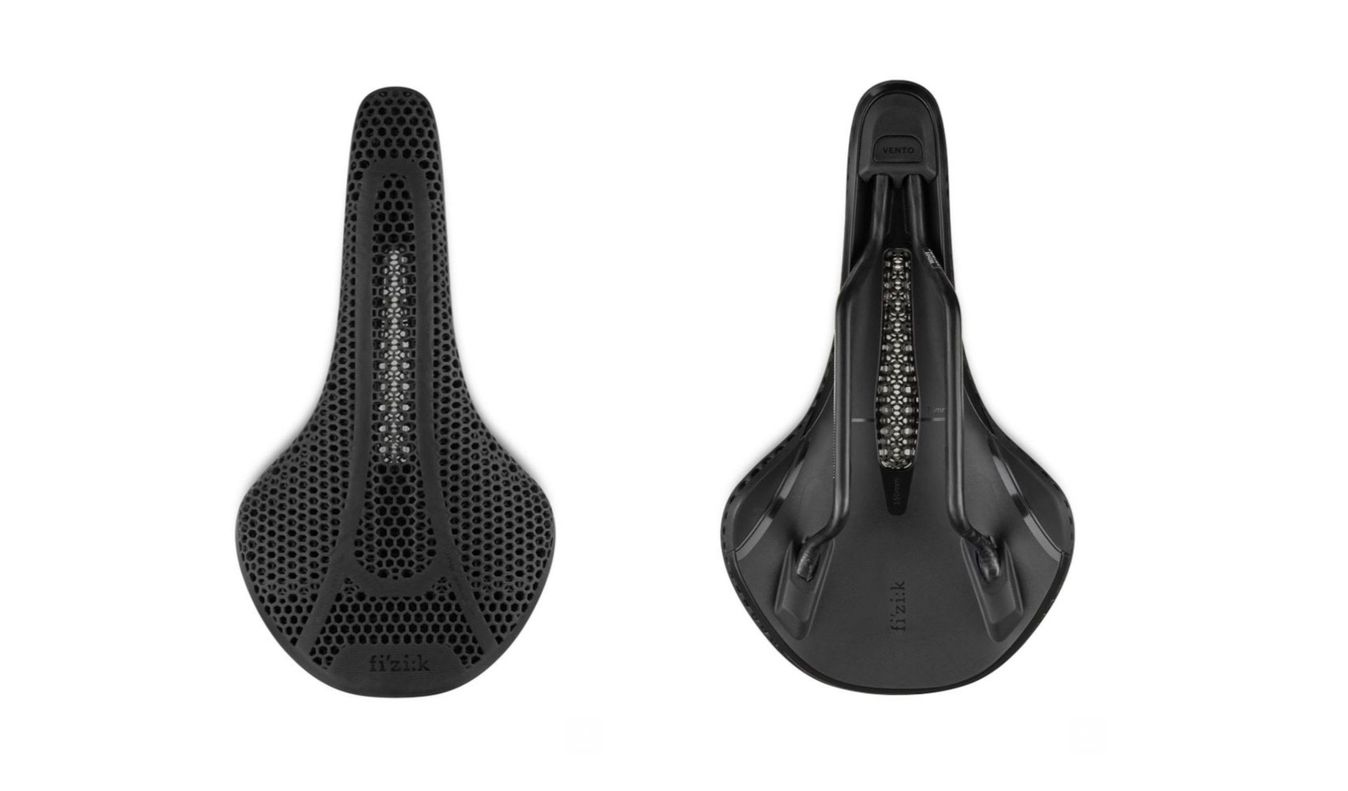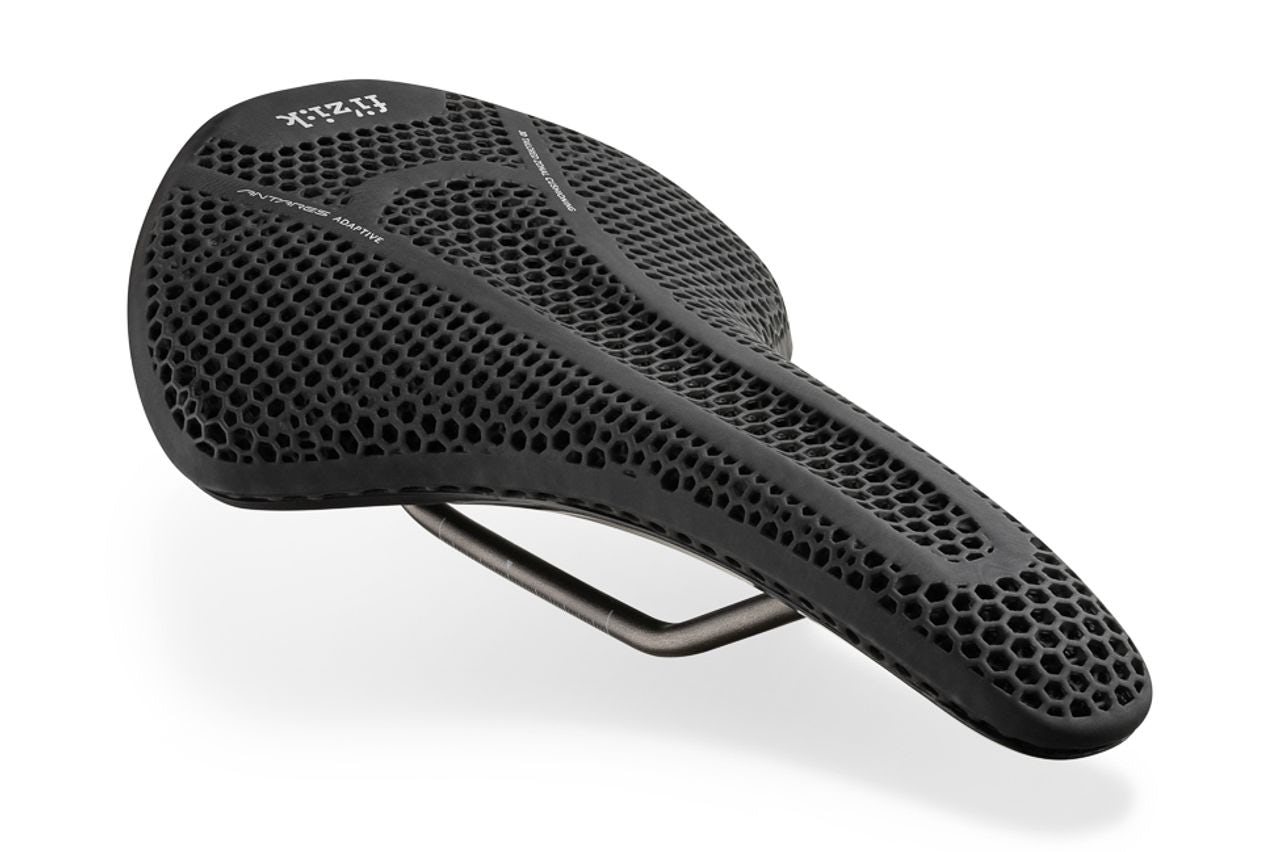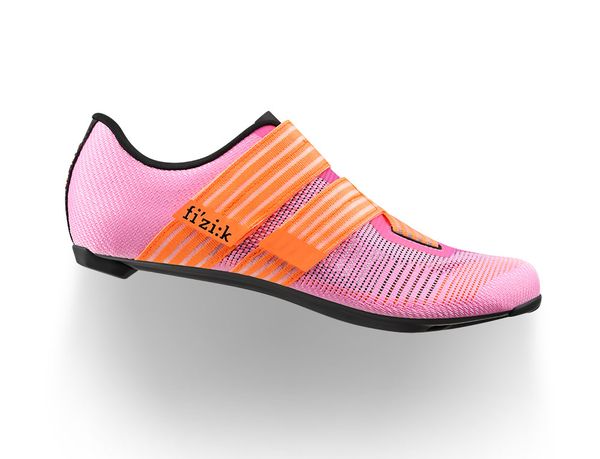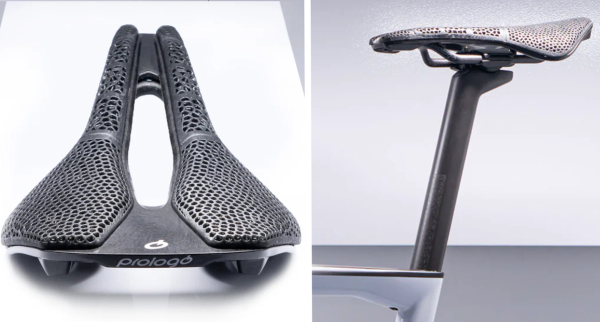Fizik adds the Antares to its Adaptive 3D-printed collection of saddles
The new saddle aims to reduce peak pressure by 60% over a traditional saddle
Alex Hunt
Junior Tech Writer
© Fizik
The new saddles use zonal design to tailor the qualities of the material to the needs of each specific area of the saddle
Italian brand Fizik has expanded its adaptive 3D-printed range of saddles to include the R1 and R3 models of the Antares.
The new Adaptive Antares is aimed at, ‘riders seeking a performance saddle that doesn’t sacrifice comfort.’ 3D-printed saddles offer more freedom over the material density of a saddle allowing different sections to have different qualities. This is something that is not possible with traditional saddles that make use of fixed-density foam throughout.
In a press release issued ahead of the product launch, the brand said, ‘Fizik’s Adaptive 3D-printed padding has now expanded to the Antares family, creating a platform for riders who want exceptional, long-lasting comfort on a low-profile performance saddle designed to allow a more connected feeling for optimal pedalling efficiency and power transfer.’

© Fizik
The Adaptive design of the new Antares is claimed to reduce peak pressure by 60%
3D-printed saddles have been growing in popularity both in the professional peloton and with recreational cyclists thanks to the zonal cushioning. This allows each section of the saddle to have its own tailored qualities. Brands achieve this by varying the matrix design within the saddle. The more connective nodes there are the firmer the saddle becomes.
Talking more about the exact process Fizik uses on the Adaptive range it said, ‘The Adaptive saddle padding is crafted by Carbon® using their revolutionary Digital Light Synthesis™ technology. DLS is an additive manufacturing process (3D printing) which uses digital ultraviolet light projection, oxygen permeable optics, and programmable liquid resins to produce parts with excellent mechanical properties, resolution, and surface finish.’
One of the headline benefits of the Adaptive technology is a claimed 60% reduction in peak pressure. This has been achieved by improved weight distribution that the zonal design allows. The result, Fizik claims, is a more comfortable saddle across its entire surface.
Specs and availability
Both the R1 and R3 saddles are available in 140mm and 150mm widths with the same traditional Antares profile. The R1 makes use of a carbon-reinforced nylon shell and carbon rail to bring the overall weight of the saddle down to 180 grams (for 140mm width). The R3 uses a carbon-reinforced nylon shell and a Kium hollow rail to bring the R3 in at a slightly lower price point. The R3 in a 140mm width comes in at 220 grams.
Available from Fizik directly or through your nearest Fizik stockist the R1 retails for £299.99 / $299.99 / €299.00 and the R3 will also retail for £259.99 / $259.00 / €259.00.
For all the latest developments from the world of bike tech make sure to head over to the tech news section of the GCN website.











